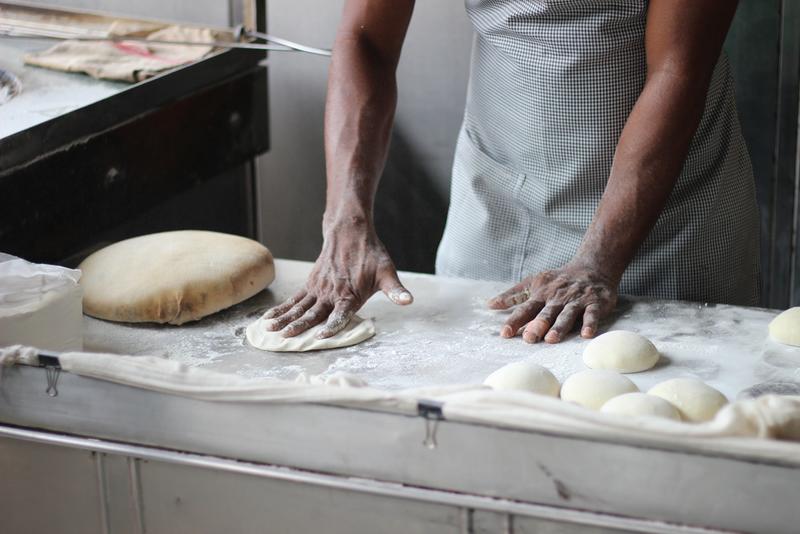How Much to Feed a 35 Lb Dog

When you buy a five-pound bag of flour, you might envision the dozens and dozens of cookies you'll be able to make or the numerous loaves of bread or cakes you'll bake. Although flour is sold by weight, many recipes list measurements of flour in cups. How many cups does that five-pound bag contain?
It all depends. The type of flour and how you measure it affect the volume of flour in a five-pound bag. Cook's Illustrated believes that there are about 5 ounces of all-purpose flour in one cup, meaning there would be about 16 cups in one five-pound bag. According to King Arthur Flour, one cup of all-purpose flour is the same as 4.25 ounces, meaning there are slightly less than 19 cups in one five-pound bag.
How You Scoop Flour Matters
One of the reasons it's difficult to definitively say how many cups are in a five-pound bag of flour is that there are many variables at play. How you scoop flour into a measuring cup affects how much ends up in the cup and ultimately in your recipe.
For example, if you dip the measuring cup into a bag of flour and scoop it out, you're likely to end up with a lot of flour in the cup. Scooping the flour compacts it into the measuring cup, meaning you're going to end up with more flour than if you used another method.
Usually, the recommended method for measuring flour is to spoon it into the measuring cup, then level off the surface with the back of a knife. According to Cook's Illustrated, there can be up to a 20 percent difference in the amount of flour in a cup based on the method you use to measure.
Sifted vs. Unsifted Flour
Another factor that influences how many cups are in a bag of flour is whether you end up sifting the flour before using it in a recipe. Sifting flour before adding it to a recipe helps to break up any clumps in it and makes the flour lighter as sifting adds in air. Sifted flour often weighs less but has a greater volume than unsifted flour.
One thing worth noting if you are going to sift flour. Look closely at the ingredients list. If a recipe wants "1 cup sifted flour," sift the flour before you measure it. For recipes that call for "1 cup flour, sifted," measure the flour, then sift it.
Types of Flour
Different types of flour have different weights and volumes. For example, one cup of whole wheat flour weighs less than one cup of all-purpose flour, according to King Arthur Flour. One cup of whole wheat flour typically weighs four ounces, compared to 4.25 ounces for one cup of all-purpose flour.
Measuring Flour by Weight vs. Volume
When you cook, you can add a dash of seasoning here and a splash of oil there without much thought. When you're baking, it's critical that you use precise measurements. Otherwise, the final product might not be quite what you were expecting.
Since measuring by weight is usually more accurate than measuring by volume, many bakers prefer to weigh out their ingredients rather than using measuring cups.
How to Improve Measurement Accuracy
If you don't own a kitchen scale and aren't interested in buying one, you can still bake to your heart's content. It's just a matter of learning to measure flour to increase accuracy and to produce consistent results. Make sure you're using a measuring cup made for dry ingredients. Your best bet is to spoon flour into the cup, rather than try to scoop flour out of the package directly.
As you spoon flour into the measuring cup, try not to shake the cup or slam it down on a counter. You want to avoid compressing the flour. Otherwise, you can end up with too much.
Source: https://www.reference.com/world-view/many-cups-5-lb-bag-flour-47445fdad50700e1?utm_content=params%3Ao%3D740005%26ad%3DdirN%26qo%3DserpIndex&ueid=90771843-9569-42d0-860a-55dbf7929cab